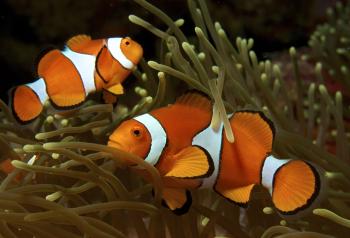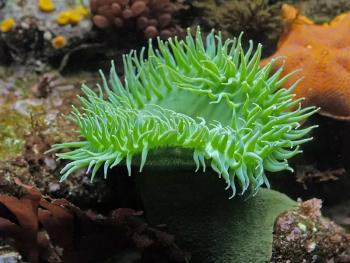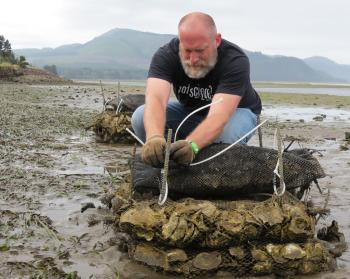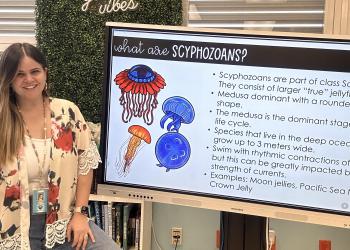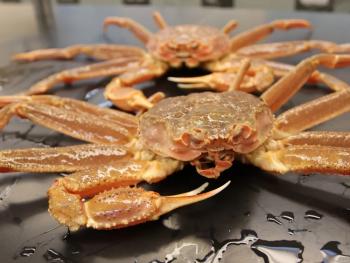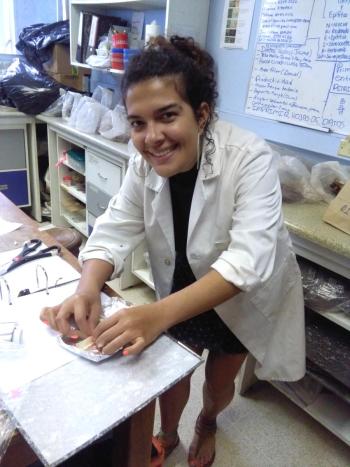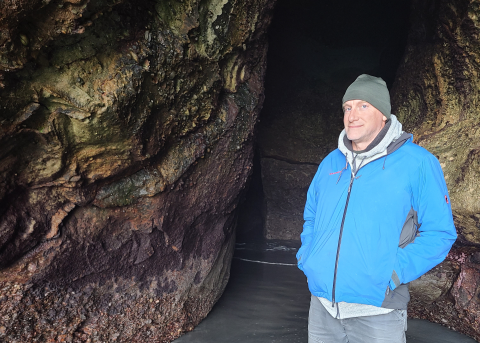
George Waldbusser developed a curiosity for sea creatures at an early age. That curiosity has shaped his scientific career.
George grew up on Long Island, NY, not on the ocean but close enough that he visited the beach frequently. Long Island was an interesting place to be in his teens to early-20s because it had such a high population density near the sea. As he got older that locale interested him because of the interaction between people and the sea; that evolved into an interest in environmental science. But when George started college it was in mechanical engineering, which turned out to be a mistake for him. So he dropped out and worked for about five years at a power plant while finding a new pathway.
His path was not a direct one to a PhD; George went back to college at age 25. As an undergraduate at St. John’s University, he was looking for research opportunities and began knocking on doors. He knocked on the door of a botanist, who wasn’t there. But the benthic ecologist was in: and that set George on his scientific path. He began doing benthic ecology research, examining oyster settlement around New York Harbor with the NY/NJ Baykeeper. He looked at community recovery following marsh restoration in New Jersey with a private consulting firm (that required hoisting a canoe over a chain-link fence to access sample locations).
George studied the interaction of biological and chemical oceanography in the mud. In 2005, a report from the Royal Society came out acknowledging the issue of ocean acidification (OA). Clams live in muddy organic matter, that naturally has high carbon dioxide (CO2). George wondered: does that make them more robust to changes in OA or not?
His graduate research prepared George for jumping into this issue. He had to be an expert in two disciplines, which takes a lot of scholarship. At that time he also started looking into oysters in the Chesapeake Bay and other bivalves in nearshore environments. Since estuaries tend to be naturally higher in acidity, what does that mean for the oysters in an acidifying ocean?
After George started his job at Oregon State in 2009, an oysterman from the Whiskey Creek Shellfish Hatchery approached him with the problems the hatchery was having due to OA. This was a perfect problem for George to work on. He understood the issue and already had been working with a carbonate chemist. At that time there hadn’t been much OA research, though the field was growing rapidly.
But the scientific community can be conservative about new ideas and George encountered a lot of resistance at first: scientists thought changes in OA wouldn’t matter to these organisms since they already lived with naturally higher carbon dioxide conditions. But, the oyster industry was able measure OA impacts on oyster larvae. George realized he had to make sure he could defend the knowledge he had about OA impacts. It required good scholarship and the ability to defend an idea that was new to the scientific establishment. Ensuring the science was sound also allowed the shellfish farmers to advocate strongly for the research science and that resources be allocated for that research.
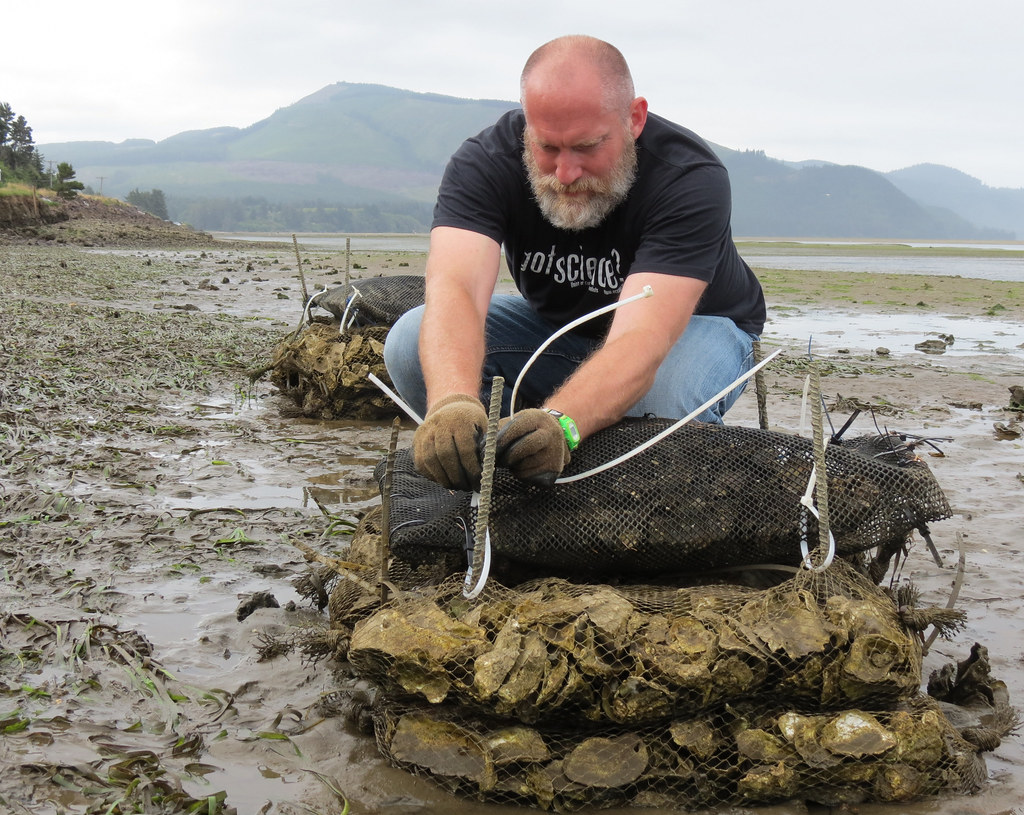
George continues to study OA and bivalves. A lot of adult bivalves can be robust and are resilient, managing environmental stress. It’s the larvae that are often the bottleneck in the population dynamics as it’s a very sensitive life history stage. If there are unfavorable events in the ocean, scientists expect them to impact larval stages, which results in larger impacts on the entire population.
When Pacific oyster and mussel larvae are building their very first shells, they are still running off energy from their eggs. This first shell building stage is also more exposed to water chemistry and is very sensitive to saturation state, a measure of how corrosive seawater is to the calcium carbonate shells. Increasing CO2 lowers the saturation rate and the lower the saturation state, the more energy it should take for larvae to produce their shells.
A natural experiment is comparing Pacific oysters to Olympia oysters because their energy use is different. Olympia oyster larvae make their shells slowly so they use less energy. Pacific oyster larvae make their shells quickly using more energy. Because Pacific oysters release their eggs and sperm into the water where fertilization and development take place, they must grow quickly before being eaten. The Olympia oyster is different: females filter sperm taking it into their bodies so there’s internal fertilization. Then the fertilized eggs are brooded in a brood chamber for about two weeks. These eggs are larger than Pacific oyster eggs. The rate at which Olympia oyster larvae make shells is also about eight times slower than other species.
Energy based lipids (they help with moving and storing energy) drop quickly, about 30% per hour, in Pacific oysters when larvae are making shells. But the Olympia oyster larvae have a bigger energy reserve. Their rate of calcification and shell formation is slower, which makes them less sensitive to a lower saturation rate, and their relative energy lipids remain almost unchanged at this same shell stage. Scientists wonder if Pacific oysters might eventually adapt to changing ocean chemistry by slowing down their shell building.
In a field experiment funded by the Oregon Ocean Science Trust, George and his students are measuring Olympia oyster growth. They have multiple sites with natural differences in salinity, pH and temperature. This tries to mimic experiments that other scientists have done in a lab setting where they can compare those parameters and combinations to see how the oysters grow. In the field you can’t control everything, but it provides more realistic responses.
Recent Work
George’s most recent grant is from NOAA, led by his colleague Dr. Burke Hales, to look at mechanisms for counteracting OA by alkalizing water. OA decreases the pH of the ocean making it more acidic. Alkalizing increases the pH making the water less acidic or more alkaline. This is geoengineering. Oyster farmers are doing this in many places on a small scale. The first solution, in an Oregon oyster hatchery, was buffering the water with the “TUMS approach” – alkalizing the water coming into the hatchery. It fixed the larval production problem and improved growth rates. The successful work with the oyster industry has given George some hope, but you can’t grow everything in a hatchery.
There are stakeholders and people with money who want to do this on a much larger, ecosystem scale, so there’s a push to understand what the limits are for organisms. That’s what the new work is about. George’s previous work showed that Olympia oysters respond negatively if seawater is too alkaline. In the new experiment, George and colleagues will look at growth of oyster, mussels, phytoplankton, crabs, and sea grass under additional alkalinity.
Since we haven’t made much progress in decreasing C02 emissions, geoengineering looks to be something that is becoming more likely to happen. So it’s important that scientists understand the implications and possible unintended consequences.
Geoengineering is however just a stop gap measure: we need to reduce our greenhouse gas emissions now. But is it possible to imitate that process without causing more CO2 emissions? Shell recycling can also be important in counteracting excess C02: restored oyster reefs are an example of this. We can’t wait two more decades to mitigate OA. The benefit of private money is that it does help the science advance but the regulations aren’t there yet, and good science takes time to do well. The urgency also can create conditions of not so great science.
George has worked with scientists employed by oyster, mussel and clam growers for years, from large companies to small growers. OA is a threat to their livelihoods, along with other climate change effects. Some have gone to DC to lobby Congress to pass climate change legislation or allocate more funds to study how severe the effects may be. George wants to help oyster farmers with ways to mitigate the OA impacts on their shellfish.
The Discernment of Science
George believes we need lots of dedicated, hard-working scientists to deal with problems caused by climate change. Helping through science is a lot of work and means sacrificing some other parts of your life. There are other ways to help society. Doing really good science is difficult and it takes time and lots of studying. You have to be open to continue learning, and it’s important to let the science and data inform us, not force the science to say what we want it to. There is lots of information that’s available that is suspect and learning to be discerning about information is an essential skill.
Read about George’s work here.
Watch an interview with George.
Read more about OA in the Pacific Northwest
